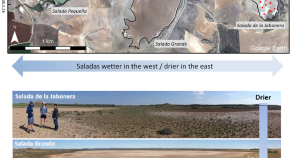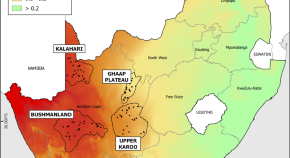Wetlands in drylands: diverse perspectives for dynamic landscapes
Authors (first, second and last of 7)

Collection
Suzanne Grenfell is at Stellenbosch University, Stellenbosch, South Africa. Email: sgrenfell@sun.ac.za
University of the Western Cape, Bellville, South Africa
Macquarie University, Sydney, Australia
Macquarie University, Sydney, Australia
Universidad Nacional de La Pampa, Argentina
Rhodes University, Makhanda, South Africa
Aberystwyth University, Aberystwyth, UK














